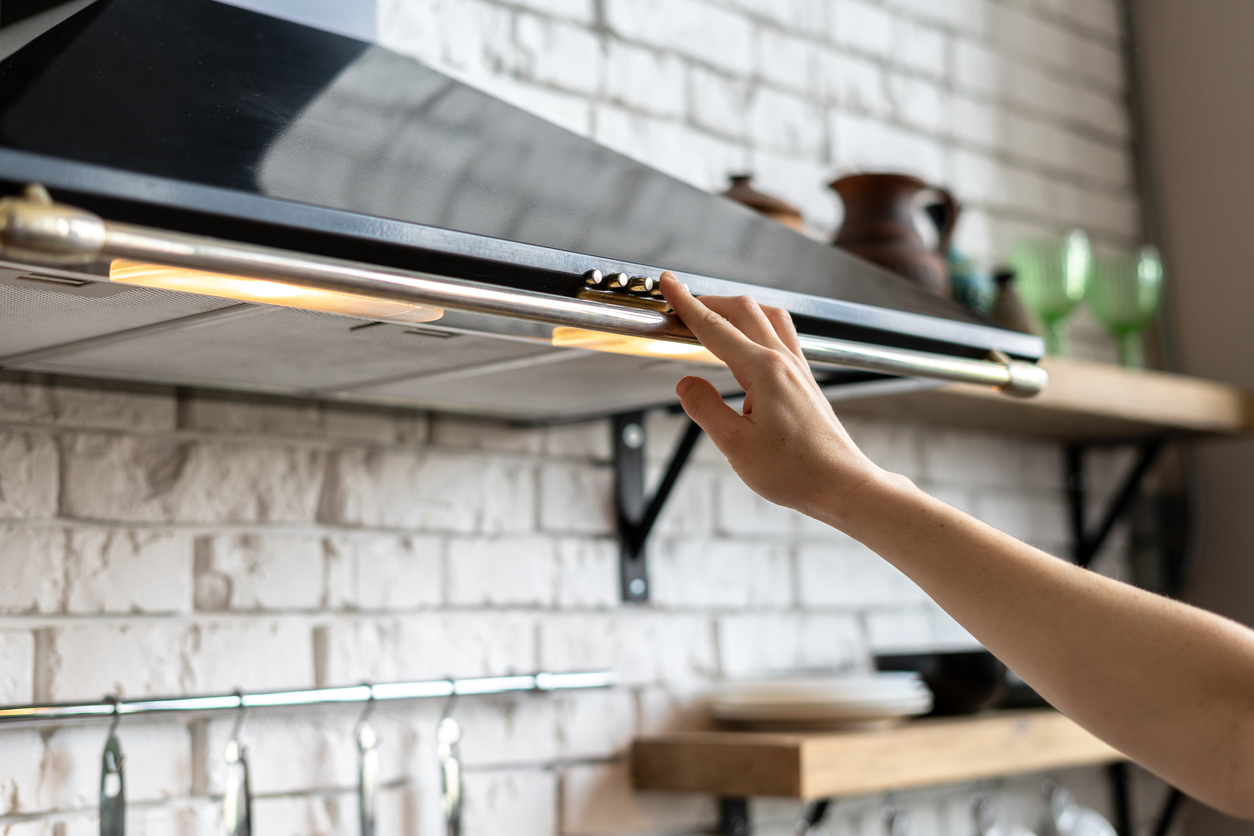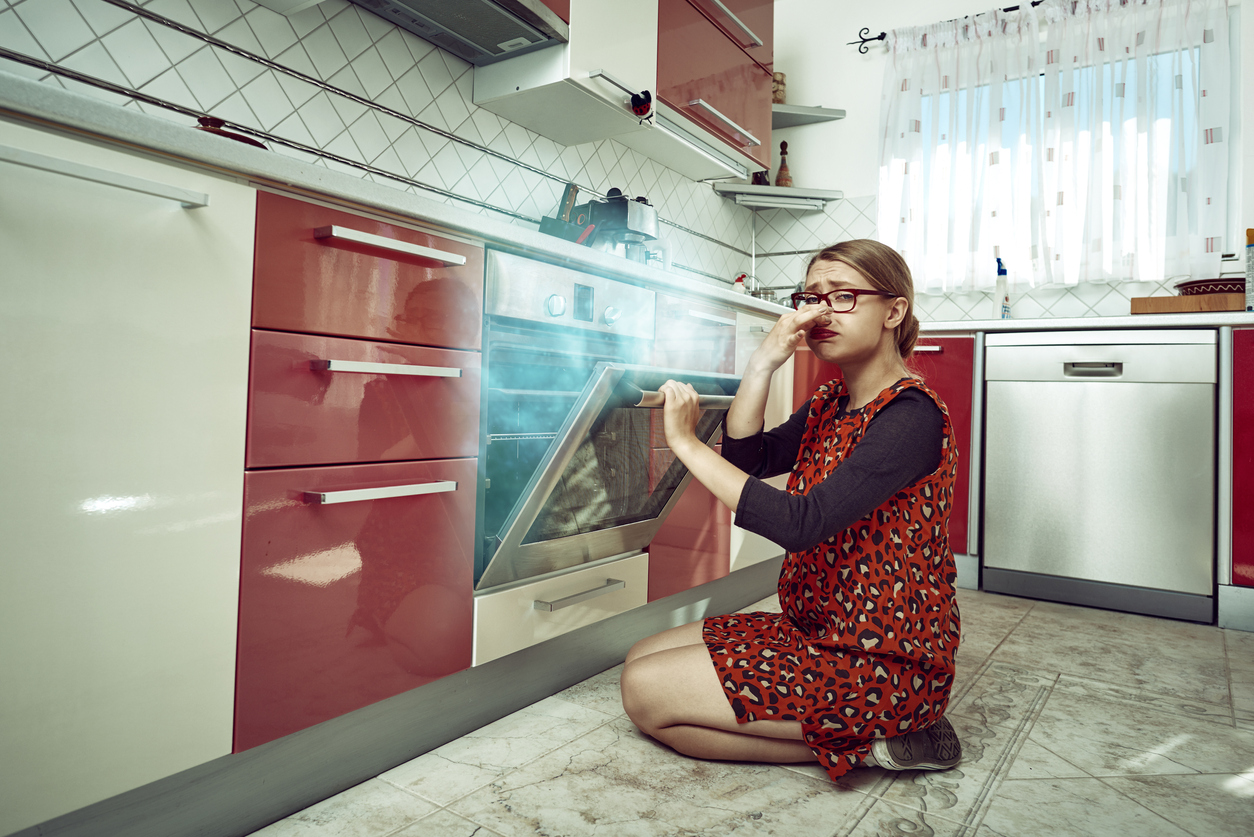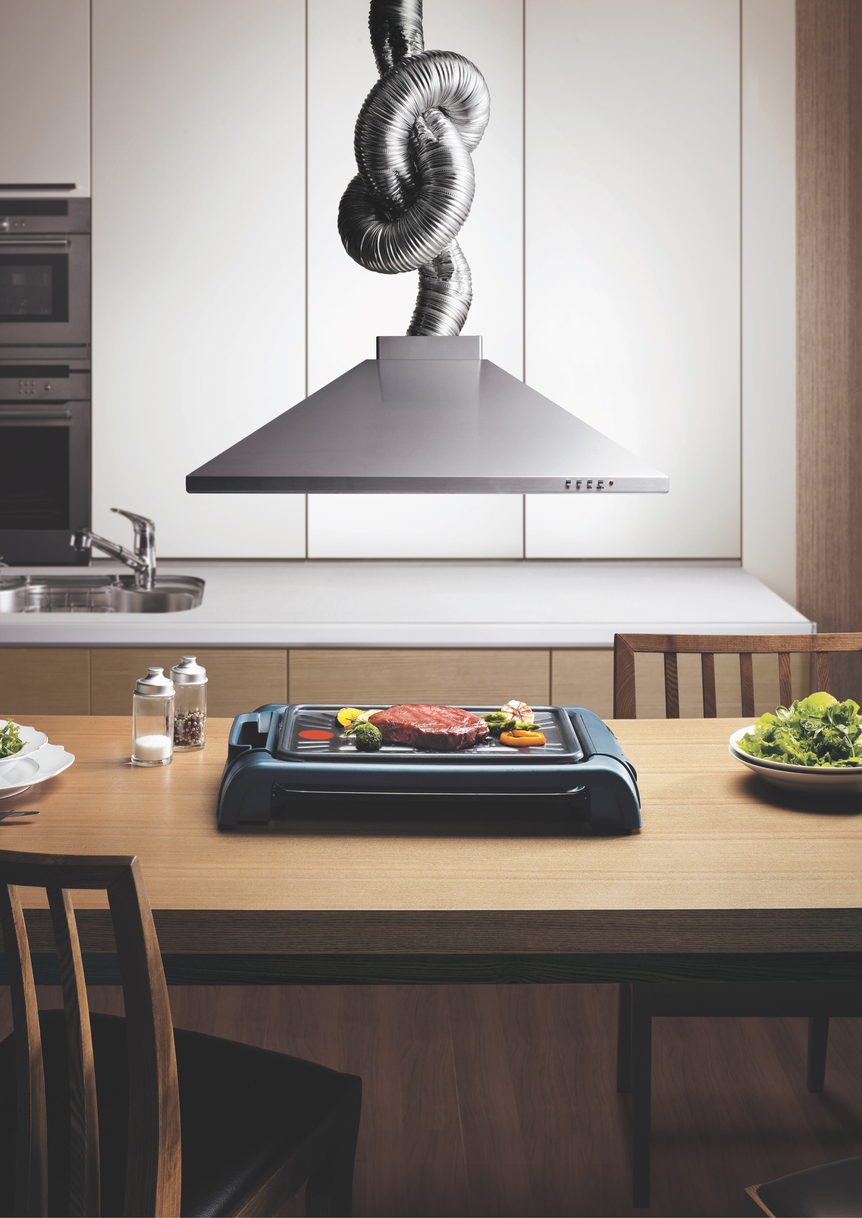Even the greatest home cook will experience a blunder from now and then. A proper range hood can help keep your creative culinary experiments and taste tests your little secret. If you’re wondering how much power your kitchen range hood should have, keep reading to find out!
Over-the-Range Hood Styles
An important part to finding the best kitchen hood for your home is understanding the different range hood styles available. Take a moment to get familiar with these different range hood styles below, including their pros and cons.
- Pros: No ductwork necessary means easy installation virtually anywhere in the kitchen
- Cons: Does not rid kitchen of humidity and heat
- Pros: Matches cabinetry for a custom look
- Cons: Matching an insert range hood with cabinetry can be pricey and involved
Wall mounted range hoods and island range hoods
- Pros: Connection to ductwork ensures hot air and humidity are also extracted
- Cons: Limited installation
- Pros: Sleek, space-friendly design
- Cons: Might not account for taller cookware

How Much Ventilation Does My Kitchen Need?
If there’s one term you should remember while browsing for range hoods, it’s cubic feet per minute (CFM). So, what is CFM and why does it matter? This is the amount of air that is either conditioned and recirculated back into your kitchen or sent directly outside via a network of in-ceiling ventilation.
In order to determine whether a certain over-the-range hood processes enough CFMs for your kitchen, you’ll need to do a little math—but don’t worry, it’s easier than it sounds.
First, calculate how big your kitchen is with the following steps:
1. Multiply your kitchen’s height, width, and length.
2. Divide the result by four; this is amount of time in minutes a range hood should be able to exchange the air of your entire kitchen.
For example:
1. A kitchen that is 15’ wide, 17’ long, and 10’ tall equals 2,550 cubic feet.
2. Divide by 2,550 by four to get 637.5; round up to 638 just to be safe.
3. Your range ventilation will require a minimum of 638 CFM to work efficiently in your kitchen space.
Gas cooktops and gas ranges require an efficient range hood to keep up with their powerful heat output. To make sure you’re purchasing a strong range hood sufficient for the heat and output, do the following
1. Add up your gas cooktop’s total BTUs.
2. Divide the result by 100.
For example:
1. A gas burner with two burners using 18,000 BTUs and two other burners using 10,000 BTUs equates to a total of 56,000 BTUs.
2. Divide 56,000 by 100 to get 560.
3. Your vent hood will require a minimum of 560 CFM to work efficiently with your gas range or gas cooktop.
You can see that calculating a kitchen size results in a larger number in this example. By opting for the larger estimate, you can confidently account for both the gas cooktop output and the size of your kitchen’s volume.
What are Impeller Fans and Blower Fans?
Enough math. Let’s briefly talk about the heart of a range hood: the fan.
Believe it or not, there is more than one way to create airflow in your kitchen—but not every method works with every kitchen. Understanding which type of fan a range hood uses is essential in knowing how much performance each vent hood can deliver.
It’s natural to want to know how a range hood fan works, but we figure knowing where each fan type can be used is more useful. For instance:
Since impeller fans work by sucking air in and redistributing it back into your kitchen, this range hood fan works best in smaller kitchens or homes that don’t cook too often. A smaller space means less air to process, which will prevent the impeller fan from overworking and working at peak performance.
However, if you’re an avid cook—especially if you dabble in Asian cuisine, which often uses hot oil as a cooking method—or have a larger kitchen, a pro-style range hood with a configurable blower can effectively handle the higher frequency of cooking, plus the grease, odors, and humidity that come along with it.

What are Ducted and Ductless Range Hoods?
As mentioned above, exhaust hoods that are not connected to either wall ventilation or in-ceiling ventilation collect the air from your kitchen, condition it, and push it back into your kitchen as fresh air. Naturally, the impeller blade creating the air pressure that sucks the air in can only work to a certain point of air pressure; air pressure higher than the manufacturers specifications will result in a downgrade in performance and possibly damage to your range hood.
Does this mean ductless range hoods are bad? Not at all! They provide enough performance to keep the air condition in smaller kitchens clean and comfortable.
On the other hand, a range hood that’s connected to your home’s ductwork allows for more air pressure, and more air pressure equates to greater performance.
Keep in mind, though, there is a fine line between just enough and too much. In fact, some range hoods have been known to create negative pressure within the home. When this happens, your home begins to draw in air from new spaces to fill the gap.
Oftentimes, this can be from an attic, improperly weatherproofed doors and windows, and ceiling ducts, which are havens for dust, mildew, and bacteria. In other words, too much performance isn’t always a positive when it comes to kitchen range hoods.

Tackle Recipes with Poise
Accidents happen—it’s part of the joy of cooking. East Coast Appliance—Virginia’s largest independent appliance retailer—wants to make sure you continue enjoying the pleasures of cooking with a quality range hood that makes erasing mistakes as easy as flip of a switch. Browse and compare our wide category of kitchen hoods from trusted brand names you’ll feel confident installing into your kitchen. We’re just a click or visit away—shop today!

